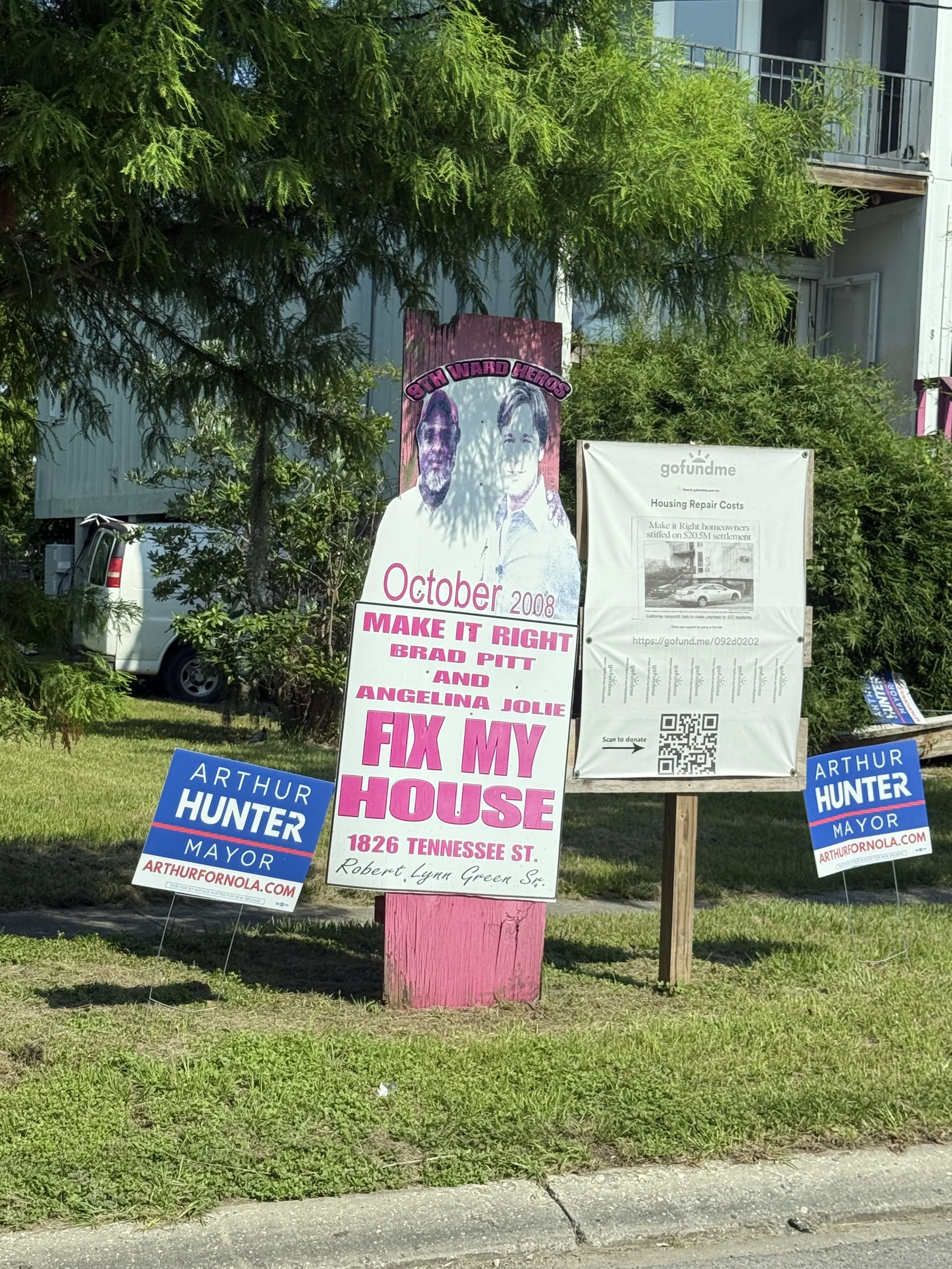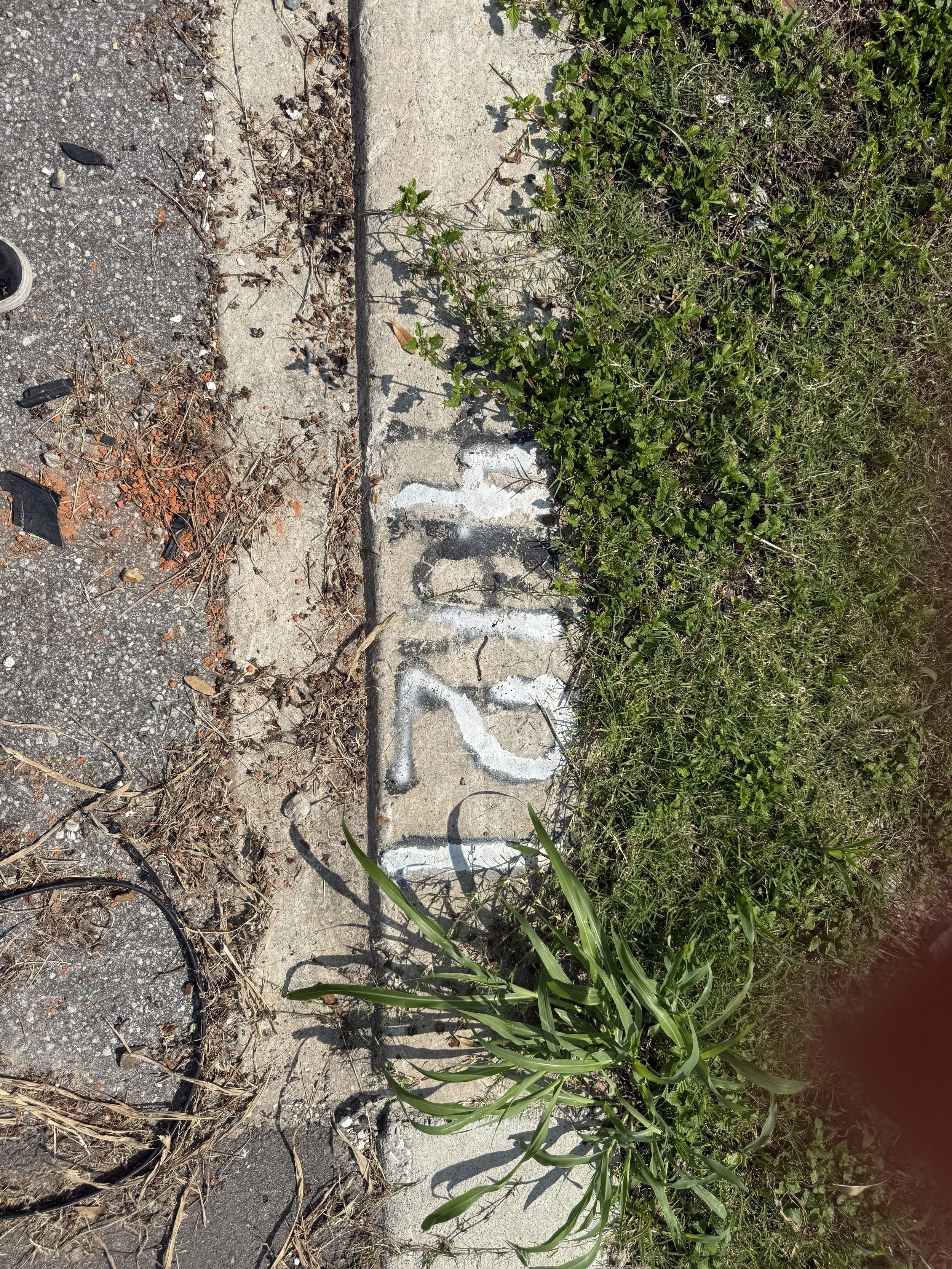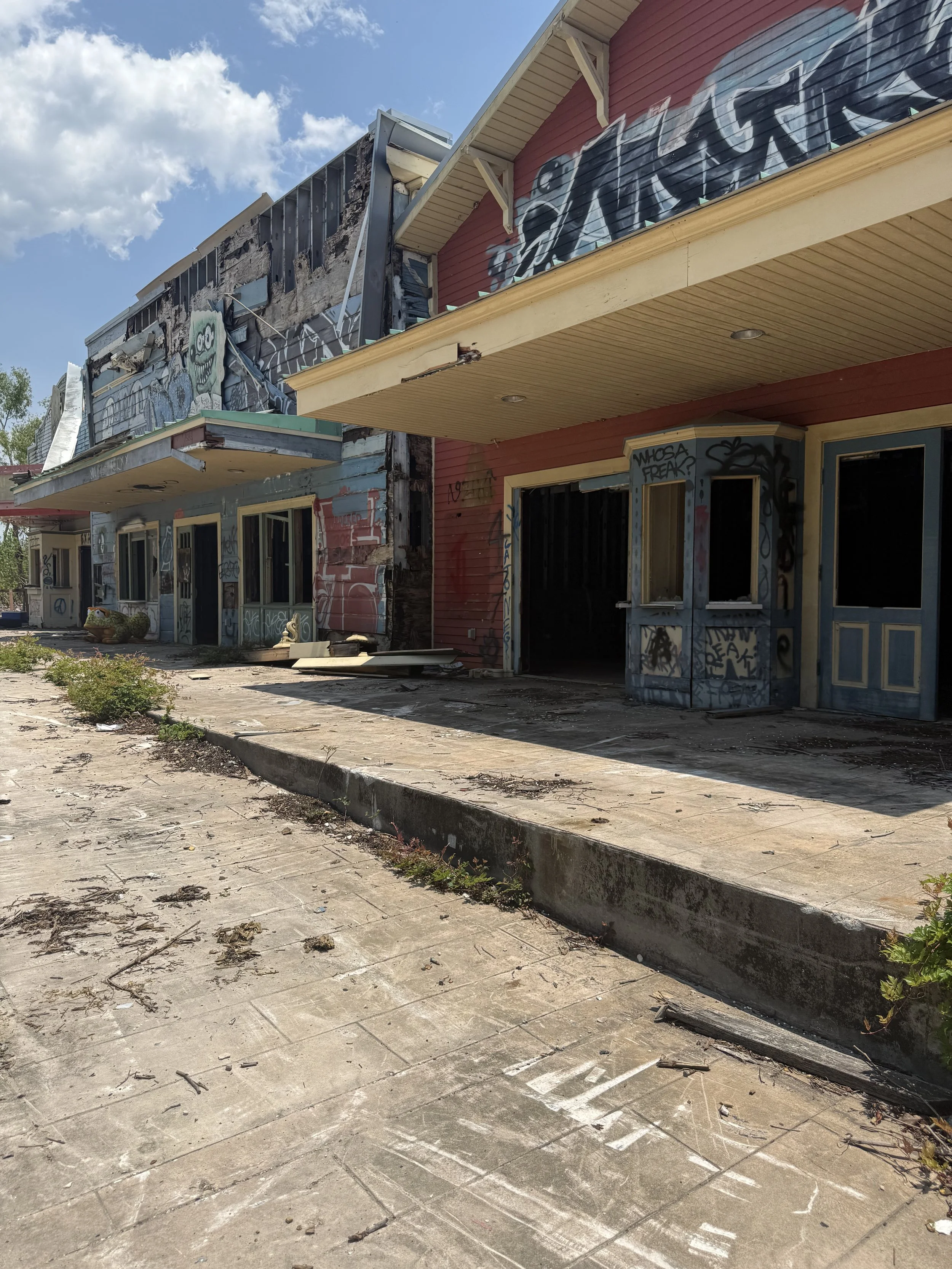You’ll never understand a city unless you’re from there.
This is how I view tourism—and even the people who move to a city in their twenties, and end up staying. You can visit every iconic location, stroll through the streets, or pause at memorials. But you’ll never fully understand the place, not like someone who was born there. You don’t have anyone buried in the Lafayette Cemetery, or any ancestors who were related to the plantations you visit. In a perverse way, it turns you into a voyeur of pain, consuming history without being a part of it.
Reading The Yellow House by Sarah Broom helped me understand New Orleans through her eyes: a city shaped by memory, loss, and rootedness. Before our group had officially visited East New Orleans and the Ninth Ward, I had gone to a nail appointment with a girl who lived in the Lower Ninth Ward. It was early in the morning, an eight-a.m. appointment, but the air was still thick with the humidity I’ve come to associate with Louisiana. The initial impression of emptiness felt normal: it was Sunday, and extremely early, so I’d just assumed that it was normal. However, on the second visit, the emptiness stuck with me.
A call to action.
We spent the previous week immersed in the bold, bright culture of Bourbon Street and the well-preserved historical districts. But on that ‘tour’, I felt the stark divide. This city was not mine. It belonged to those born here, and to those buried here.
I recognize that feeling. Raised in South Central Los Angeles, I’ve seen the changes. I remember the Village before it became USC Village, when it was University Village. There was a Superior Grocers, a movie theater, and a Baskin Robbins where my madrina always ordered strawberry ice cream in a waffle cup. The Pollo Loco where I got French fries is now a Northern Café. I’ve watched University Gateway shops morph from an abandoned lot to a rotating cast of failed businesses—an overpriced minimalist grocery store, to a CREAM that didn’t last a year, and a sushi place that became a Dunkin' Donuts.
By my junior and senior year of high school, I was walking past homes on 36th Place that were being replaced by bulky apartment complexes for students, buildings with no parking and no connection to the community. The abandoned house behind mine became one of those complexes. And the irony is I never left, so I cannot be so shocked that it’s changed. I’ve stayed, but the changes weren’t made for people like me.
That disconnect, that sense of exclusion, feels even sharper in New Orleans. In both cities, you can measure how much the city “cares” by how well it maintains its streets. In Cudahy, where my cousin grew up, the sidewalks are broken, and the roots of trees push up through the concrete. Accessibility is an afterthought. East New Orleans is no different; overgrown lots where homes used to be, cracked roads that left me carsick, streets that feel forgotten.
What remains of The Yellow House.
It feels selfish to ask why no one has done anything. But eventually, you realize: maybe no one with power ever intended to. The people who live there don’t have the resources or influence to demand better. And when you’re fighting just to get by, there’s no energy left for hope. It’s easier to invest in what’s already thriving than to help the communities that have been abandoned.
In tourist areas of New Orleans, you hardly see any trash. IV Waste trucks roll through, spraying lemon-scented cleaning agents. But step into New Orleans East, and the illusion vanishes. You’re met with cracked sidewalks and scattered garbage. The money that flows into the city isn’t for the people, but for the image. It’s for those who visit, not those who live. The hurricanes stripped so much from these neighborhoods, and no one came to help pick up the pieces. You can see who had to give up after the hurricanes that have occurred here, who had little support in picking up the pieces. Residents were left to rebuild on their own until that, too, became too much. And then, they left.
What remains of Jazzland/Six Flags New Orleans.
That’s the cruelest part. Change makes people feel like they no longer belong. When everything around you shifts, it’s hard to find your place. There is pain in remembering what used to be. When you watch everything around you change, you wonder what your place is anymore. You leave, and the next time you return, the city feels less familiar. The nostalgia that kept you tied there fades. You try to hold on to what you remember, but it flickers like a flame, merging into something new and unrecognizable—a body you no longer see as your own.
My dad raised me alone, hiring a babysitter to take me to school from age four to thirteen. He’d wake up at four in the morning, drive me thirty minutes south down Vermont to her house, and I’d nap for another hour before she got me ready. We’d watch Despierta America as she brushed my hair into a ponytail, and we’d leave by 6:30 a.m. so I could be on time—she didn’t drive, but sometimes her husband would take us and even treat me to Jack in the Box if we had time.
Unlike Broom, I didn’t feel shame in that journey; it felt like a privilege not to be on the 204 for an hour. But I understand her discomfort. The private school she attended left the impression of a place she did not belong her; “We seem, in our car and in our lot, not the match the school to which I now belong.” This is how I feel about the ‘new’ that is coming to Los Angeles—the sleek apartments, the expensive restaurants. None of it was made with my community in mind. It makes people feel like outsiders in their own neighborhoods. Like we should be ashamed for not keeping up.



